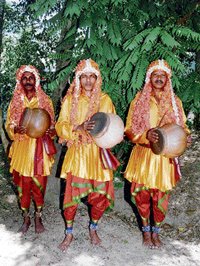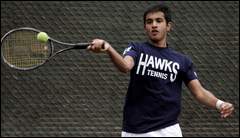The leadership of different fringe groups of non-Keralite organisations is confused over which front to support, but the leaders clearly advise their members to ‘vote for those candidates who stood by them in crises.’
According to the office-bearers, those candidates who didn’t hurt their interests should be favoured in the elections.
In spite of the please-all-parties policy, there are strong undercurrents and the members take a common decision in an area regarding support for candidates.
An important feature, however, is that the members of the non-Keralite organisations have different party leanings and the office-bearers of the same organisation take different stands at different areas based on the situations existing there.
“We have over 2,000 memberships in Kochi alone. However, we haven’t taken a decision on support to any front. We advise our members to vote for candidates who take up the interest of Tamilians,” says Tamil Aikya Sangam president L.Chappani Muthu.
The Sangam, which was founded in 1978, had actively participated in the previous elections as well.
The Cochin Gujarati Mahajan too has not taken any open decision on support for any front. Barat Kona, a member of the Gujarati Mahajan, said that their organisation was non-political and hence no decision on voting in support of any front.
However, as a business community it is imperative that the members vote for “those who support the cause of the business community and those who stood for development.”
The Mahajan has not only Gujaratis, but Jains and Marwadis are also its members. It has nearly 3,000 members in Kochi.
Though a minority, Sardarjis too are keen to cast their votes in the state. Bunty Singh, whose father Harbans Singh was the first Sikh to settle down in Kochi, said that their community has nearly 40 members having voting rights in the state.
“We do not take a common decision on voting. It is left for the members to select a candidate,” he said.
However, Bharatiya Konkini Bhasha Vikas Sabha (BKBVS) has openly come out in favour of the LDF by appealing in Konkani to vote for the CPM candidate. BKBVS general secretary P.R.Shanmugham said that the UDF led by Oommen Chandy had failed in protecting the “genuine rights of the minorities.”
The BKBVS has already held a ‘survey’ which says that the LDF would come to power with 76 to 84 seats, he said.






